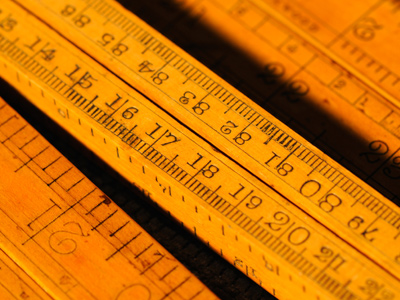
There are 10 millimetres in a centimetre.
Level 5-6 Numbers - Decimals - Multiplication and Division
In KS3 Maths, after adding and subtracting, we dive into multiplication and division – the everyday heroes of maths, we use them in junior school, secondary, college and university. What's different about them in this quiz? Well, the questions below will help you divide and multiply decimals.
Quizzes: The Path to Smart and Happy Kids
1 .
What is 1,270.5 ÷ 15?
82.7
84.7
86.7
88.7
You could work this one out in your head by first dividing 1,270.5 by 3 to get 423.5. Next you would divide 423.5 by 10 to get 42.35 (one 30th of 1,270.5). Multiply this number by 2 for the answer: 84.7. Or you could use pen and paper - much easier!
2 .
If a tube of toothpaste costs £1.57, how much do three tubes cost?
£3.15
£4.50
£4.66
£4.71
To double-check your answer, £1.57 + £1.57 + £1.57 is the same as £1.57 x 3!
3 .
A t-shirt costs £5.99. Mrs. Crawford bought one each for her four children. How much did she spend?
£20.00
£22.96
£23.96
£24.50
Remember to estimate the answer. £6.00 x 4 = £24.00, so the figure should be close to this
4 .
There are 10 millimetres in a centimetre. How would you write 34.12cm in millimetres?
3.412mm
34.12mm
341.2mm
3,412mm
Remember - all the digits move one place to the left when multiplying by 10
5 .
Joseph spends a total of £34.44 on four new rose bushes for his garden. How much is one rose bush?
£3.40
£3.44
£8.44
£8.61
34 ÷ 4 = 8.5 and 0.44 ÷ 4 = 0.11. Add these two figures together for the answer
6 .
What is 48.44 x 7?
339.08
340.44
484.47
500
An approximation would be 50 x 7 = 350 so you know straightaway that last two answers are wrong
7 .
What is 2.42 x 5?
10.2
11.7
12.1
13.5
To multiply by 5 simply move all the digits one place to the left and then halve the answer
8 .
Joanne is building a bookcase and needs 38 fixings at 14p each. How much in total will she pay for the fixings?
£3.40
£5.32
£53.20
£532.00
Remember that 14p = 0.14 when written in decimals!
9 .
What is 6.04 ÷ 4?
1
1.4
1.5
1.51
6 ÷ 4 =1.5 and 0.4 ÷ 4 = 0.01. Now just add these two figures together
10 .
How would you write 655.35mm in centimetres?
65.535cm
655.35cm
6,553.5cm
6,600cm
To divide by 10 just move all the digits one space to the right
**Unlimited Quizzes Await You! 🚀**
Hey there, quiz champ! 🌟 You've already tackled today's free questions.
Ready for more?
Ready for more?
🔓 Unlock UNLIMITED Quizzes and challenge yourself every day. But that's
not all...
not all...
🔥 As a Subscriber you can join our thrilling "Daily Streak" against other
quizzers. Try to win a coveted spot on our Hall of Fame Page.
quizzers. Try to win a coveted spot on our Hall of Fame Page.
Don't miss out! Join us now and keep the fun rolling. 🎉
**Unlimited Quizzes Await You! 🚀**
Hey there, quiz champ! 🌟 You've already tackled today's free questions. Ready for more?
🔓 Unlock UNLIMITED Quizzes and challenge yourself every day. But that's not all...
🔥 As a Subscriber you can join our thrilling "Daily Streak" against other quizzers. Try to win a coveted spot on our Hall of Fame Page.
Don't miss out! Join us now and keep the fun rolling. 🎉







